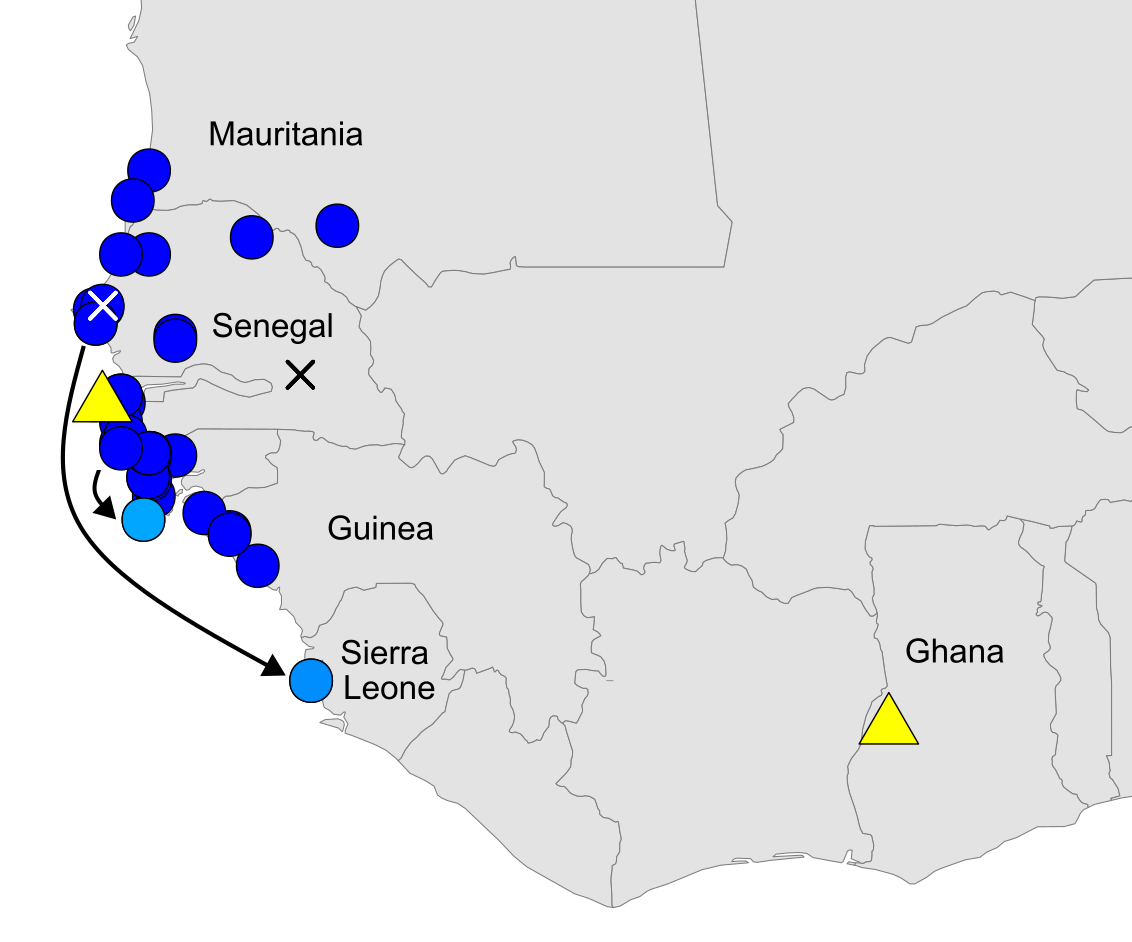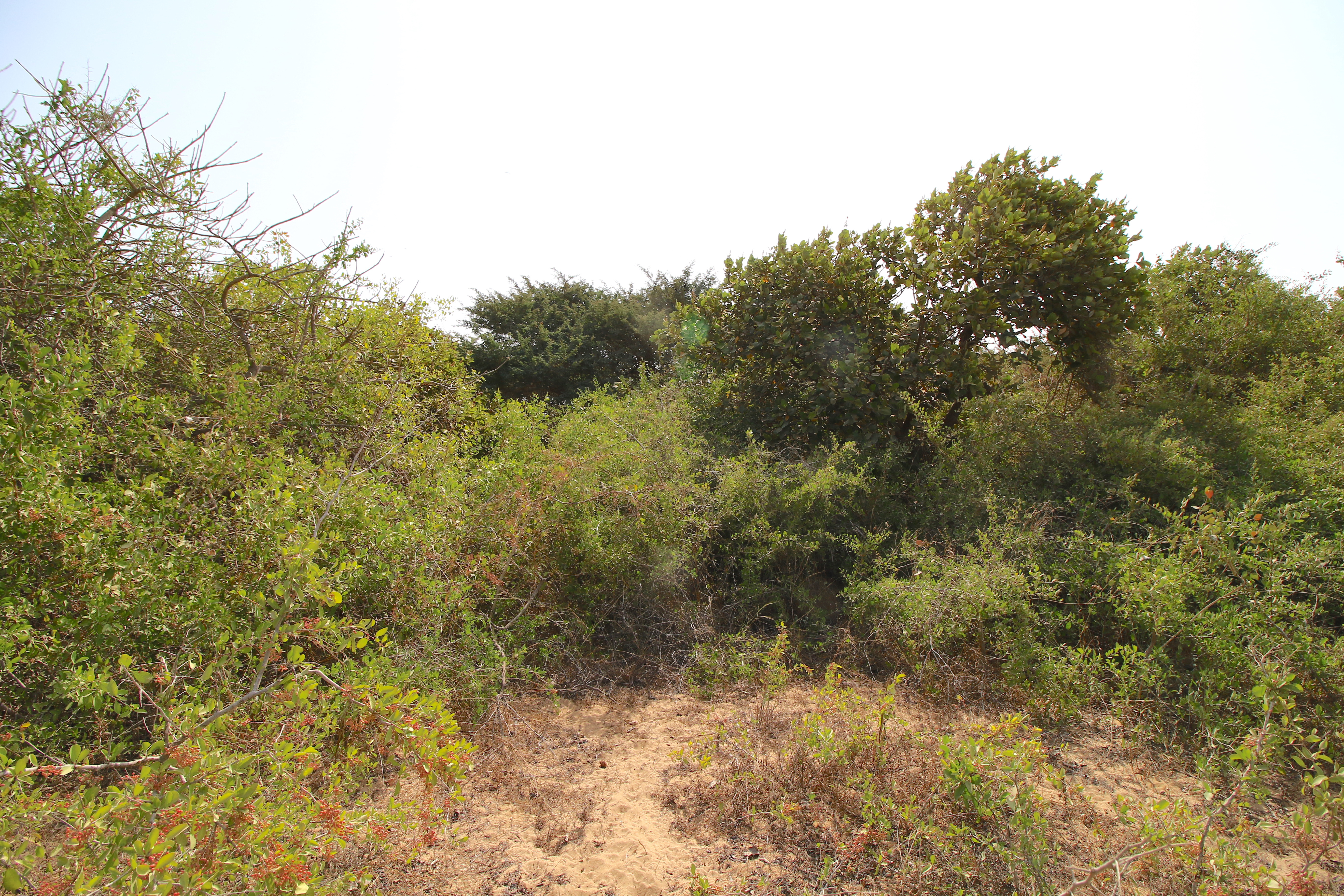Tracking sheds light on the mystery of the disappearing Nightingales
Published in Ecology & Evolution

The Nightingale (Luscinia megarhynchos) is a symbol in European culture, renowned for its enchanting song that has inspired artists, poets, and musicians for centuries. Today, in the UK, they are only found in a small area of southern and eastern England, having undergone a huge decline in both number and range. This contrasts with the generally favourable status of the Nightingale in most of the rest of Europe. For example, in Berlin, Nightingales can be found nesting in parks and singing alongside street performers and other sounds of the city. Degradation and loss of breeding habitat have been implicated in the decline in the UK. However, Nightingales are migratory birds and only spend three to four months of each year in the UK. Empty suitable breeding habitat and range contractions that do not appear to match climate change projections suggest therefore that conditions these birds encounter elsewhere in the world may also be responsible for their dwindling numbers.
We explored the theory that UK Nightingales are being negatively impacted during the non-breeding season, by the link between breeding and non-breeding populations, termed migratory connectivity, as well as habitat suitability at the non-breeding grounds. The degree of migratory connectivity is a key factor determining the responses of populations to environmental change experienced throughout their annual cycles. We hypothesized that high connectivity populations are less able to respond to environmental changes that vary at a large scale, like a changing climate, than populations with lower connectivity, as the close proximity of individuals means there will be little variation in the conditions they experience. They may also be especially vulnerable to even a small amount of habitat loss within their range, especially when it is of high quality. When there is little mixing between populations in the non-breeding grounds, these impacts are concentrated on specific breeding populations and may be more detectable than if they were diluted across a wider part of the breeding grounds. Such a scenario could help explain the declines observed in the population of Nightingales breeding in the UK, but not elsewhere.
Findings
We used light-level geolocators (Fig. 1) to track 26 Nightingales from the UK to their non-breeding grounds. These are tracking devices that measure ambient light levels and are commonly used to reconstruct the migrations of small birds. The Nightingales were tracked to a small area of West Africa, concentrated along the coast of Senegal, The Gambia and Guinea Bissau (Figure 2). We measured distances between birds at the non-breeding grounds to determine population dispersion, where low dispersion means high connectivity between breeding and non-breeding grounds, and vice versa. The estimated population dispersion of UK Nightingales was lower than that of all 98 populations of 45 species of migratory birds reported by Finch et al. (2017), including that of three other Nightingale populations breeding in France, Italy and Bulgaria, tracked by Hahn et al. (2013).
![Figure 1. Geolocator fitted onto a male Nightingale. [Photo by Chas Holt].](https://images.zapnito.com/cdn-cgi/image/metadata=copyright,format=auto,quality=95,fit=scale-down/https://images.zapnito.com/uploads/Wfmq7PIaQ3Wex74lhf3m_880c2afa-8033-4eb4-9689-09d799a71def.jpg)
Figure 1. Geolocator fitted onto a male Nightingale. [Photo by Chas Holt].

Figure 2. Estimated non-breeding locations (n= 32) of 26 Nightingales fitted with geolocators in the UK between 2009 and 2017. Dark blue circles indicate the primary (first) occupied site. Arrows and light blue circles indicate onward movement to secondary sites occupied at midwinter (31st December). Crosses show GPS locations of birds tagged in the UK. Yellow triangles show tagging sites in The Gambia and Ghana. Note that uncertainty around geolocator-derived locations, particularly regarding latitude, can be large.
Reciprocal tagging of four birds in The Gambia, the core of the identified non-breeding area for UK Nightingales, strongly suggested that they bred in the UK, providing further evidence of a strong link between the UK and The Gambia (Fig. 3). Additional tracking methods provided further support: two birds breeding in the UK and fitted with GPS tags, which are much more accurate than geolocators, were also tracked to Senegal, while two tagged in The Gambia were tracked to the UK. Traditional ringing also revealed six exchanges between birds ringed or recaptured in the UK and The Gambia, and no exchanges between The Gambia and other European countries adjacent to the UK. The non-breeding range of UK Nightingales therefore seems to be distinct from that of other breeding populations. This means that UK Nightingales are likely highly vulnerable to negative changes in this part of West Africa, while other populations are not. Any negative impacts to UK Nightingales at their non-breeding grounds are also more likely to be detectable in Europe, as they will be concentrated in a small area of southern and eastern England.
Three birds from a site in Ghana, within the non-breeding range of the previously tracked Nightingales breeding in Italy and France, were tracked to breeding grounds in Italy, Morocco and Algeria (Figure 3). Comparing the migratory networks of birds spending the non-breeding season in Ghana and the Gambia indicates a considerably more complex migratory network in Ghana, and a much larger source breeding area, than for The Gambia. Any negative impacts on Nightingales spending the non-breeding season in Ghana will therefore be diluted across a wide part of the breeding grounds and will likely be less detectable in breeding populations.

Figure 3. Observed source breeding populations of Nightingales found in the non-breeding period at sites in The Gambia and Ghana. Polygons are 100% minimum convex polygons around breeding sites derived from geolocator data (circles), combined with UK locations of birds involved in ringing exchanges and GPS tracking (squares) and tagging locations of populations in Italy and France (Hahn et al. 2013) whose non-breeding range encompassed the site in Ghana (triangles).
Based on independent field survey data collated from various sources, including citizen science databases like eBird, we produced a habitat suitability map for the non-breeding range of Nightingales in West Africa. Superimposing the non-breeding locations of the birds tracked from the UK and those of birds previously tracked from populations in France and Italy onto this map revealed significantly lower non-breeding habitat suitability for birds breeding in the UK than the other populations. Part-circumstantial evidence suggests that non-breeding habitat suitability for the UK population has deteriorated during the period of population decline, as a result of droughts and habitat loss / degradation. Fig. 4 shows the type of habitat occupied by Nightingales in The Gambia.

Figure 4. Example of the type of habitat used by Nightingales at the Kartong Bird Observatory in the Gambia. [Photo by Colin Cross / Kartong Bird Observatory]
Implications
The particular pattern of connectivity that we observed for UK Nightingales and other breeding populations corresponds to observed patterns of population change within Europe, supporting the hypothesis that UK declines have been driven in part by changes occurring in the non-breeding grounds. Our results demonstrate variation in migratory connectivity and complexity of migratory networks within a single species, the Nightingale, and they reveal a stronger connection between breeding and non-breeding locations for the population breeding in the UK than has previously been demonstrated for a long-distance migrant. Additional work using high-resolution tracking techniques is needed to determine whether site-level conservation to protect important habitats at the non-breeding grounds is required to help the UK population of Nightingales recover.
From a methodological perspective, our results indicate that high connectivity may be more common among small migratory birds than is currently appreciated. Through tagging birds with known dispersion close to zero at the non-breeding grounds, and then estimating dispersion in the same way as for birds tagged on the breeding grounds, we showed that the dispersion of UK Nightingales in the non-breeding season is likely below the lower limit detectable for the species using light-level geolocation. The implications for the conservation of migratory species will need to be addressed if the use of higher resolution tracking techniques shows that high connectivity is present in other species and populations.
References
Finch, T., Butler, S. J., Franco, A. M. A. & Cresswell, W. Low migratory connectivity is common in long-distance migrant birds. Journal of Animal Ecology 86, 662–673 (2017).
Hahn, S., Amrhein, V., Zehtindijev, P. & Liechti, F. Strong migratory connectivity and seasonally shifting isotopic niches in geographically separated populations of a long-distance migrating songbird. Oecologia 173, 1217–1225 (2013).
Follow the Topic
-
Scientific Reports

An open access journal publishing original research from across all areas of the natural sciences, psychology, medicine and engineering.
Related Collections
With Collections, you can get published faster and increase your visibility.
Obesity
Publishing Model: Hybrid
Deadline: Apr 24, 2026
Reproductive Health
Publishing Model: Hybrid
Deadline: Mar 30, 2026


Please sign in or register for FREE
If you are a registered user on Research Communities by Springer Nature, please sign in